FiiO K13 R2R : A Bigger, Smarter, and More Capable R2R Desktop All-Rounder
Pros:
* Powerful output — easily drives full-size hard to drive headphones and planars.
* Clean, natural R2R sound with more air, clarity, and depth than the K11.
* Solid aluminum build with a nice “skylight” window and smooth controls.
* Customizable RGB light that also indicates the file sample type.
* Lots of inputs and outputs, including balanced, XLR, and Bluetooth 5.4.
* Built-in 10-band EQ PEQ for sound tweaking.
* Dead-silent background, great dynamics, and wide soundstage.
* Independent volume memory and side USB-C
Cons:
* For what you’re paying and everything the K13 brings to the table, I honestly can’t find anything to complain about.
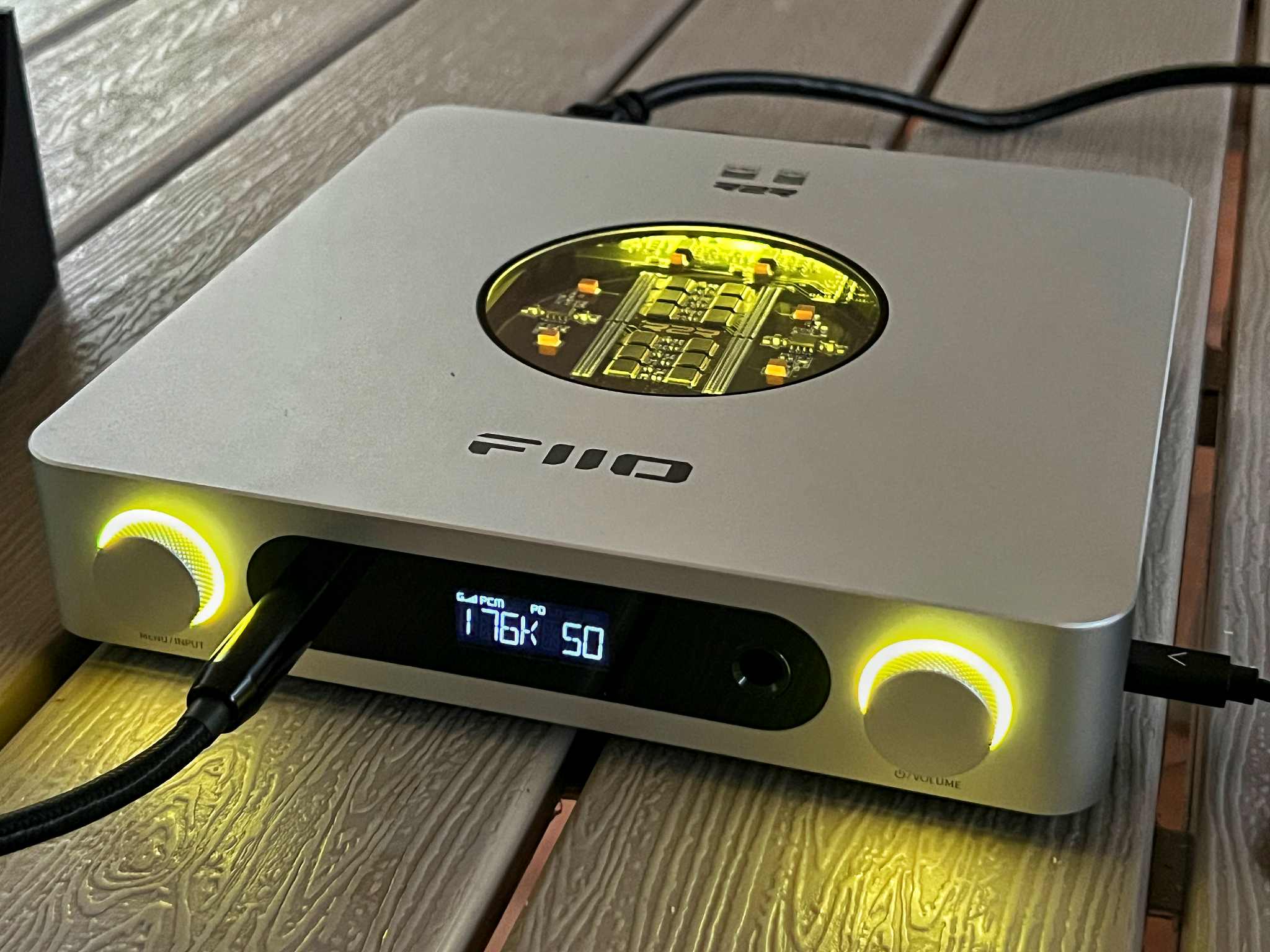
The FiiO K13 R2R landed on my desk last month, and I’ll be honest it took me a while to stop listening long enough to actually start writing about it. I’ve been pairing it with all kinds of sources, IEMs, and headphones just to see how far it can go. I’d been looking forward to this one ever since FiiO teased it, and it didn’t disappoint.
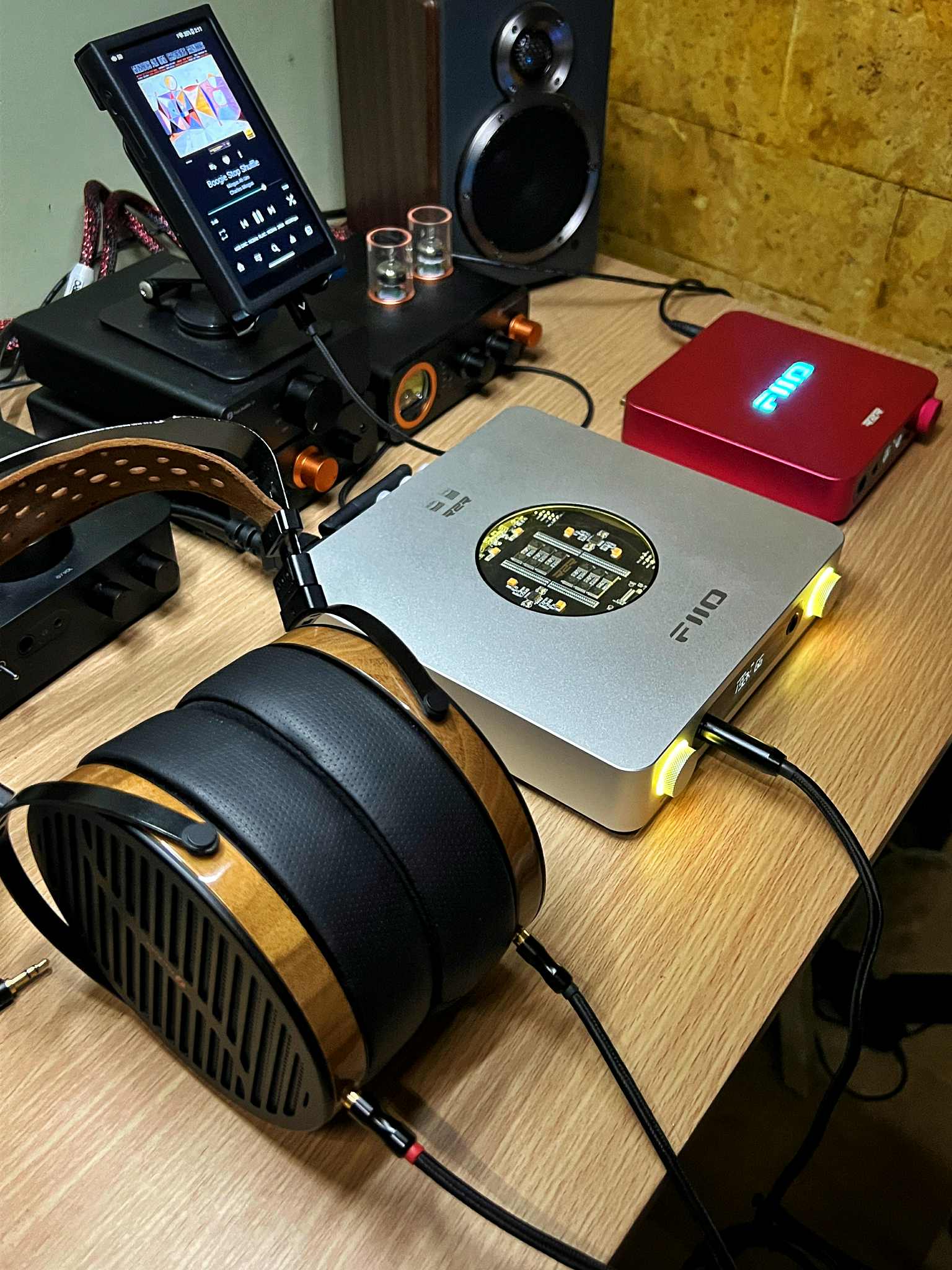
The K11 R2R has been my daily driver for close to a year now. It’s been through everything with me testing new IEMs, powering full-sized cans, and handling late-night movie sessions when I should’ve been asleep hours ago. So when the K13 was announced, I knew I had to see what FiiO had up their sleeve.
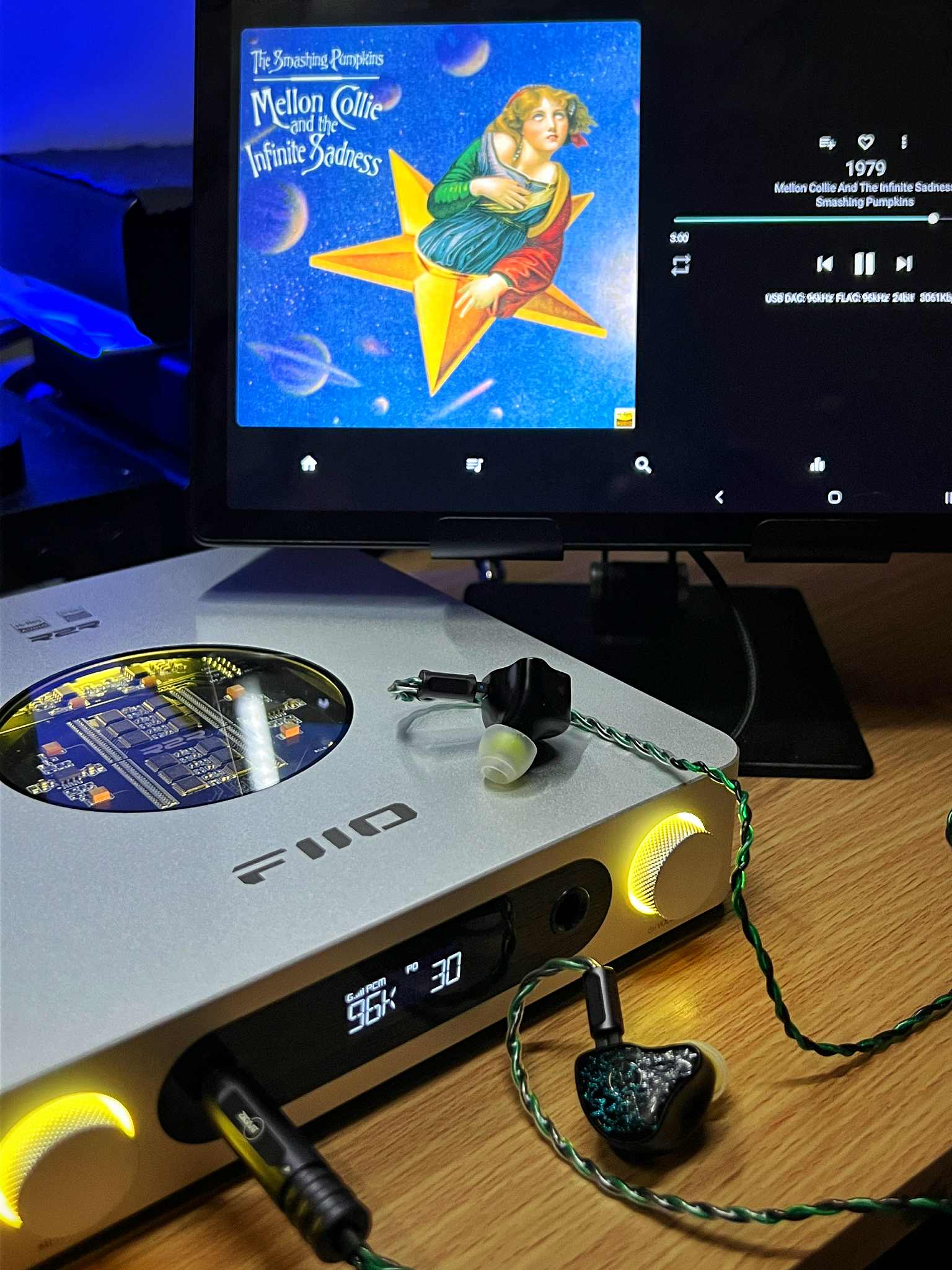
On paper, the K13 looked like the natural evolution of the K11: more power, higher specs, better control. And in actual use, that’s exactly what it delivers. It takes everything the K11 did right and polishes it cleaner output, smoother operation, smarter features, and noticeably better technical performance. It still has that R2R soul, but the overall experience feels more refined and capable. It’s the kind of upgrade that doesn’t just measure better, it feels better to live with day to day.
Whats in the box? checout my short unboxing video of the K13 R2R.
Build, Design, and Everyday Usability
If you’ve seen the K11 R2R, the K13 will feel familiar but more refined and a lot bigger. It carries over FiiO’s clean, minimalist industrial design but adds a new “skylight” window on top that lets you peek at the R2R resistor array glowing softly beneath. It’s a simple touch, but it gives the unit some personality kind of like a visual nod to the analog soul under the hood.
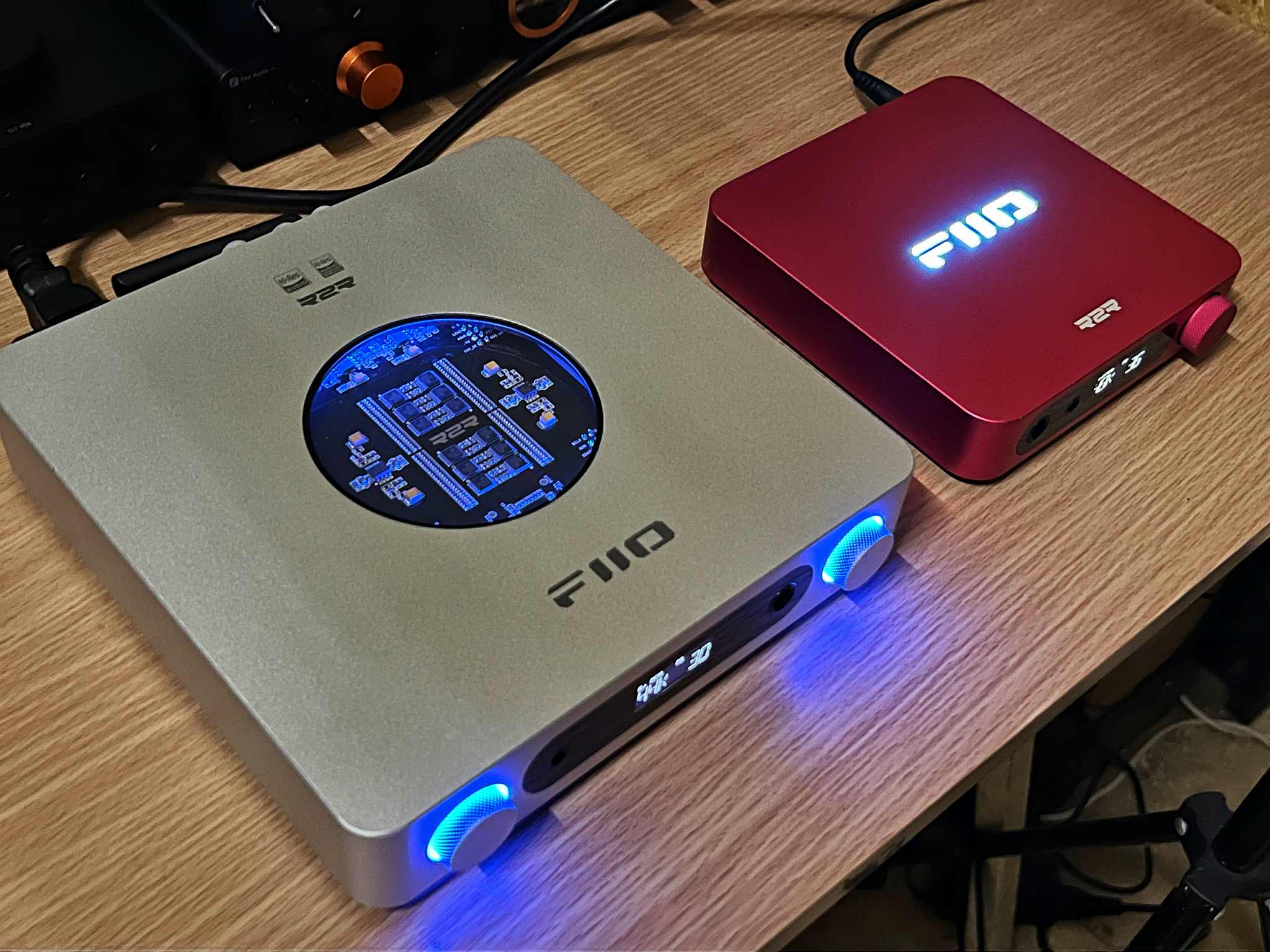
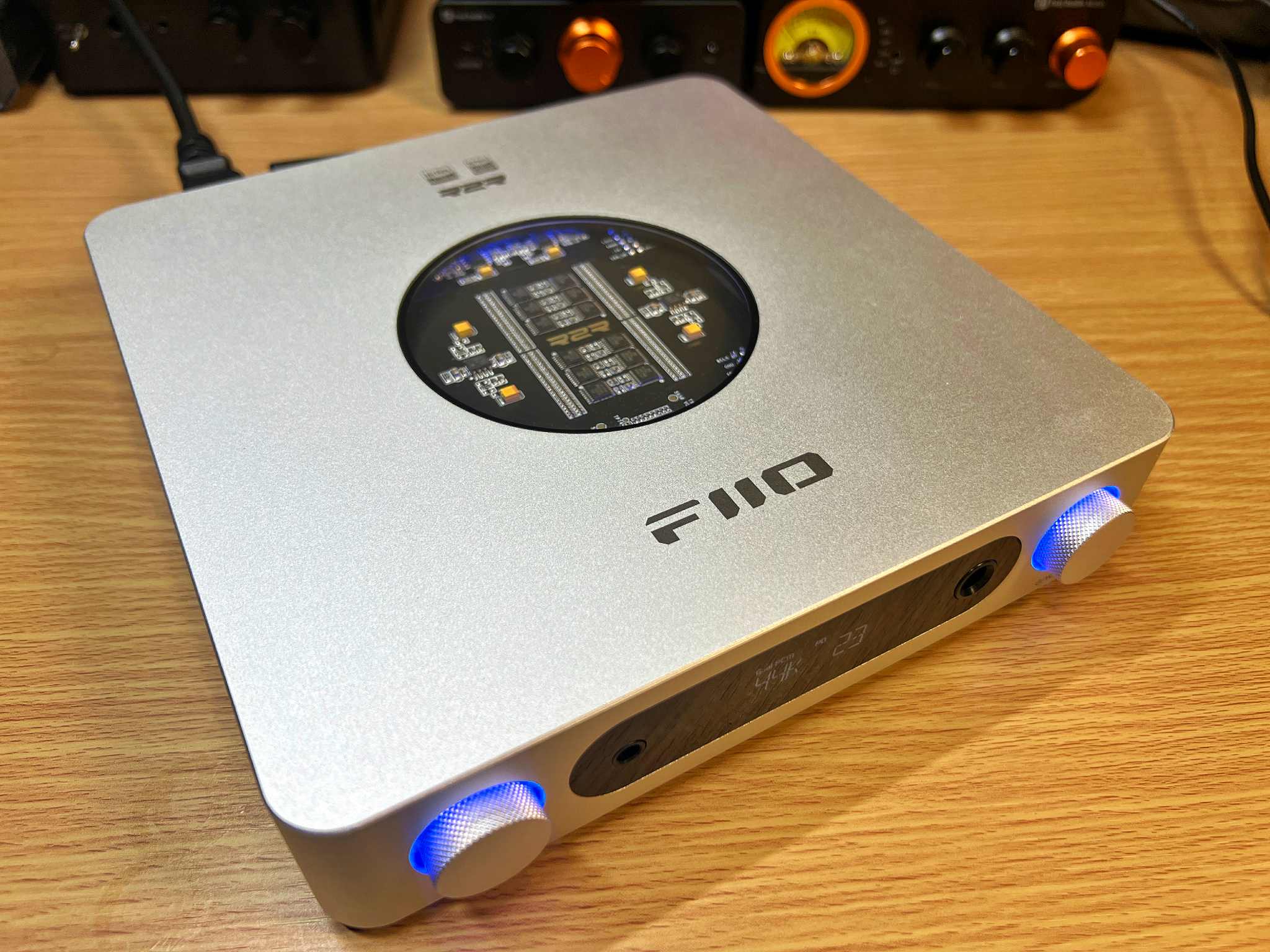
The body is still machined aluminum, solid and weighty with no creaks or flex anywhere. FiiO clearly knows their way around metalwork. The dual knobs up front handle volume and input selection with smooth resistance, and the long-lasting LCD display is bright, clear, and easy to read even in dim light.
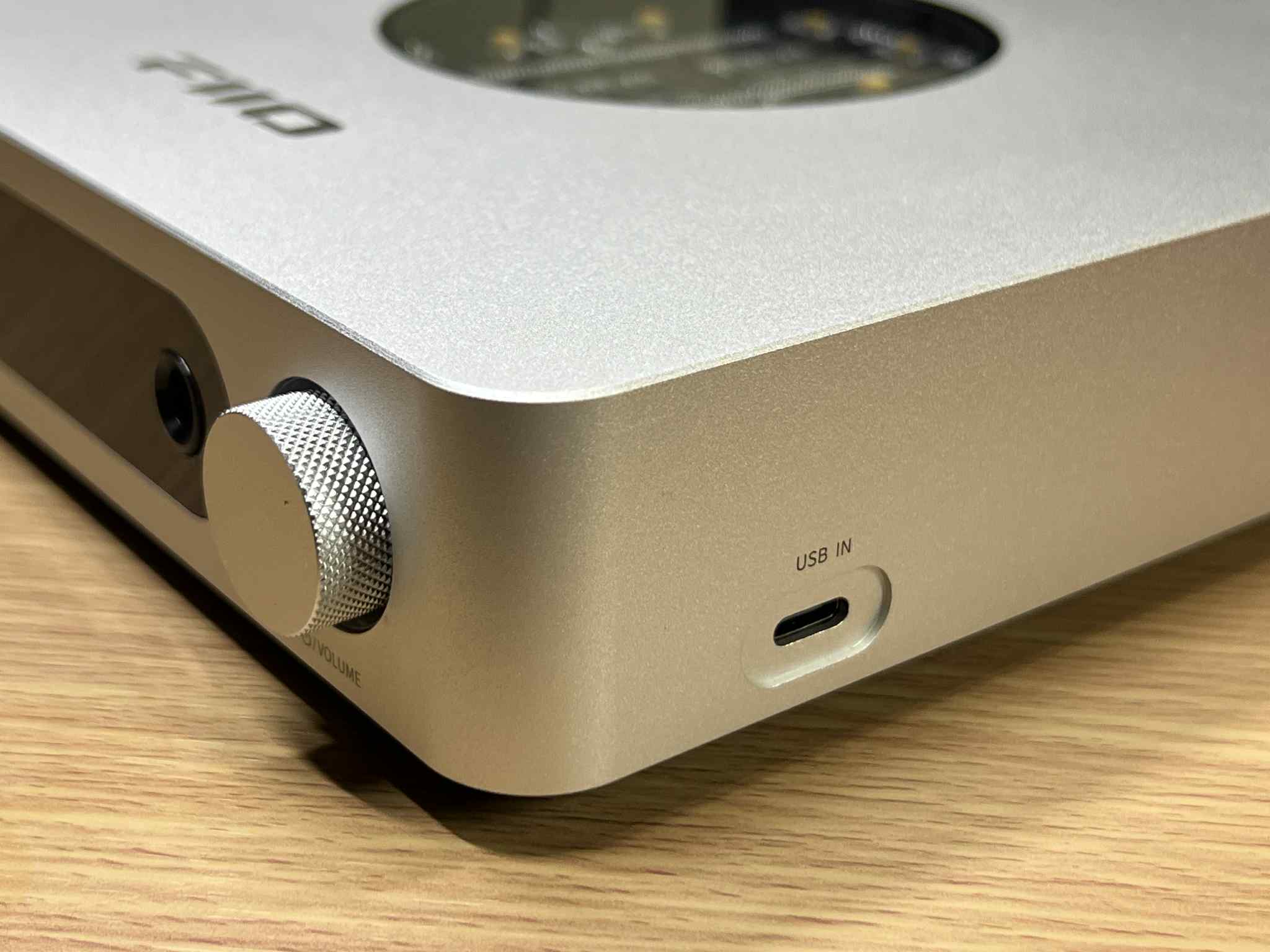
One detail I actually didn’t expect to appreciate as much as I do: the extra USB-C port on the side. At first, I thought it was redundant why put another USB-C input when there’s already one at the back? But after using it, it just makes sense. If you’re connecting a DAP or smartphone via OTG, you can plug it right into the side with a short cable instead of snaking one around the back. It’s a small quality-of-life improvement that feels thoughtfully designed rather than tacked on.
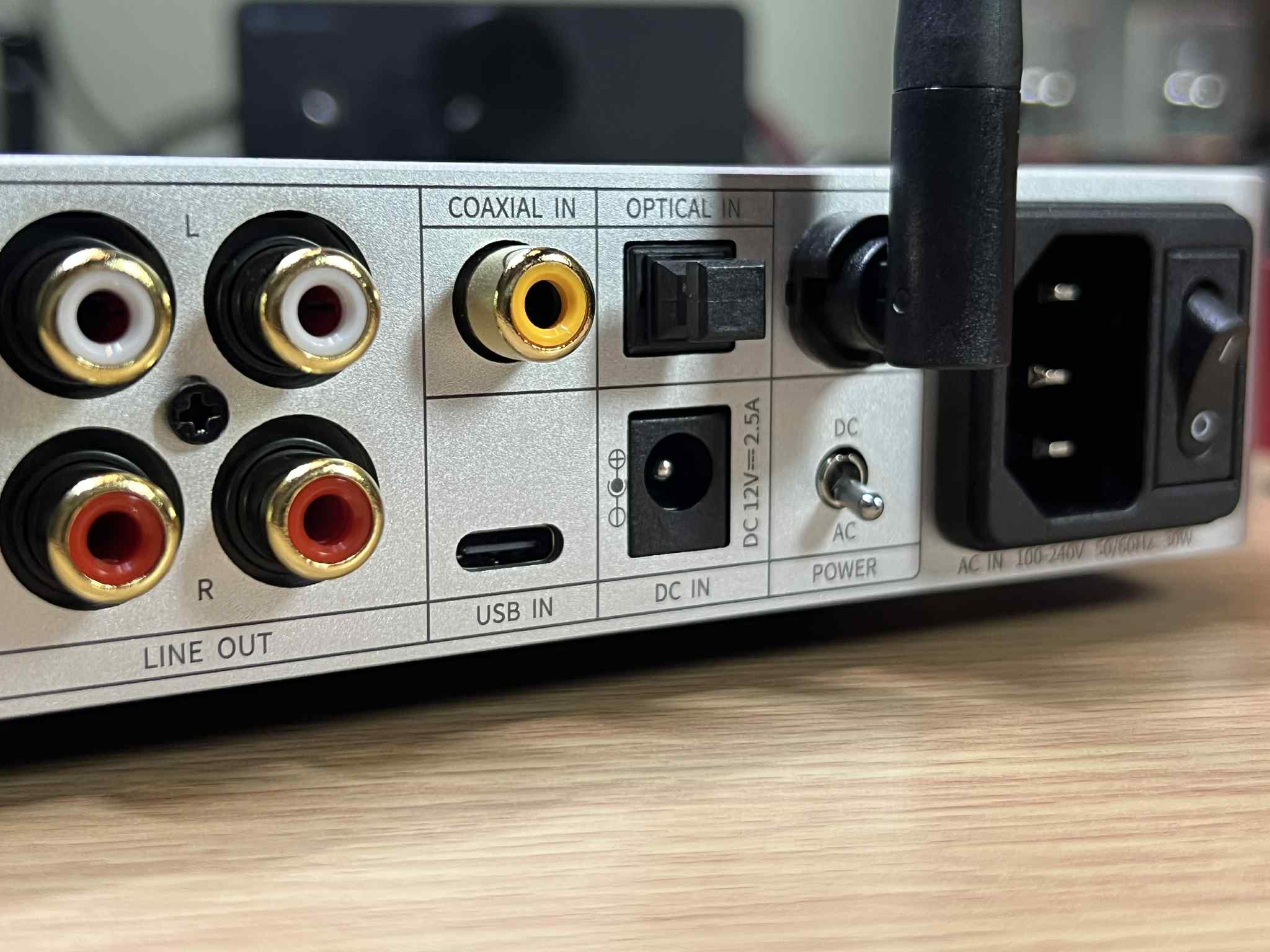
The K13 also adds Bluetooth 5.4 with LDAC, AAC, and SBC codec support, which makes it way more flexible. You can now use it as a wireless DAC if you want a cleaner, cable-free setup. It’s not the main event this is still a wired-first device but it’s a solid extra feature for casual listening.
Power and Connectivity
FiiO wasn’t exaggerating when they said the K13 packs double the muscle of the K11. it pushes up to 2400mW per channel (32Ω balanced), which is more than enough to drive most full-size headphones and even a good chunk of the planar crowd. I tested it with the Fosi Audio i5, Hifiman HE400se, Sivga Anser, and Kiwi Ears Altruva, and the fun but hard to drive Kiwi Ears x Z Serene, it handled all of them effortlessly. No strain, no distortion, just clean headroom to spare. Even the Fosi i5 planar and the Serene, which tends to make weaker amps sweat a little, had solid control and dynamic punch.
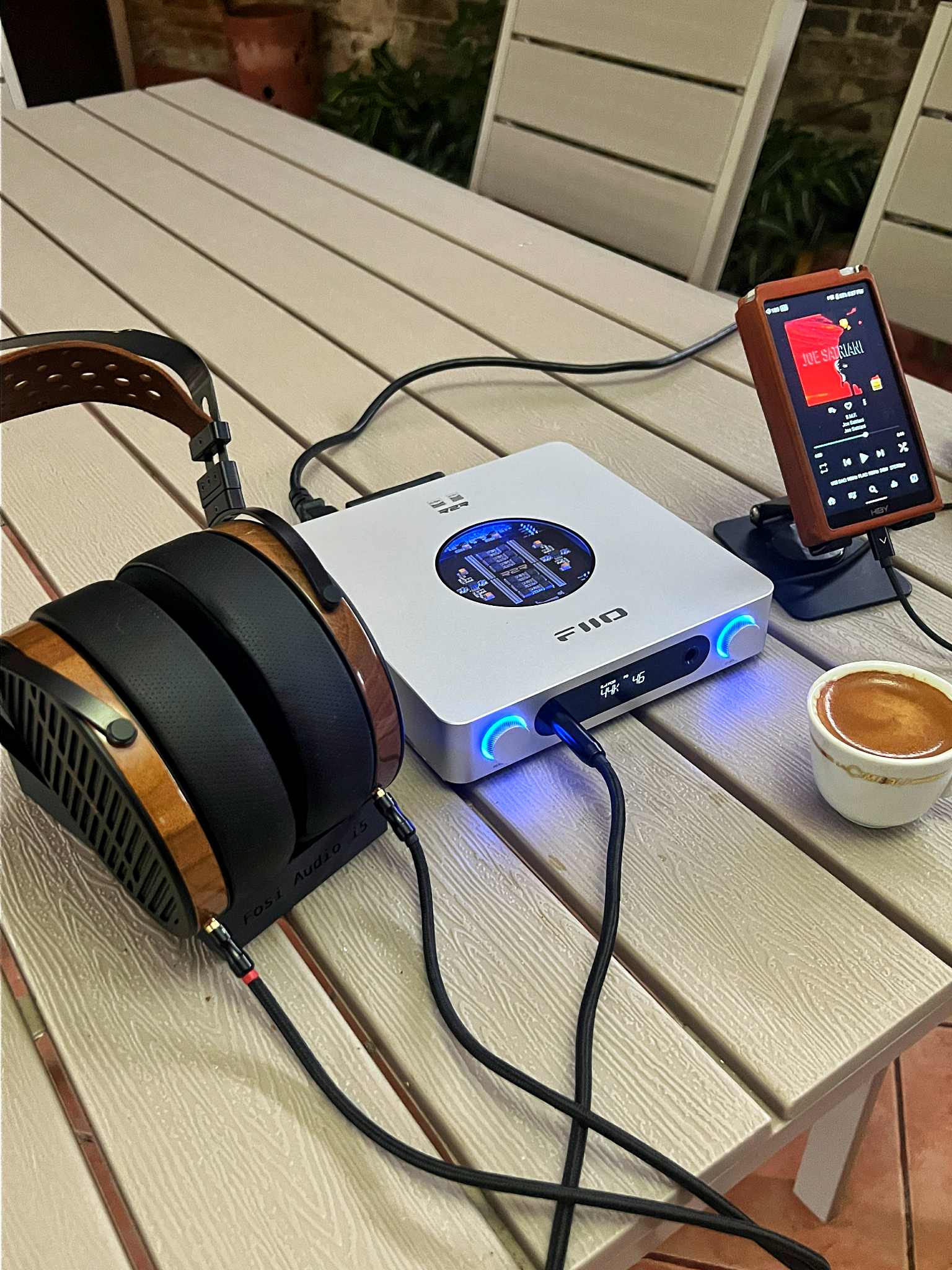

Connectivity-wise, the K13 feels more like a proper desktop hub than just a DAC/amp. You get the full range of inputs and outputs: USB, optical, coaxial, RCA, XLR, plus both balanced 4.4mm and standard 6.35mm headphone outs. There’s also a preamp output, so you can feed the K13 into powered monitors or another amplifier if you want to build out a more complex setup. It’s flexible enough to sit at the center of any desktop chain, something the K11 hinted at, but the K13 fully delivers.
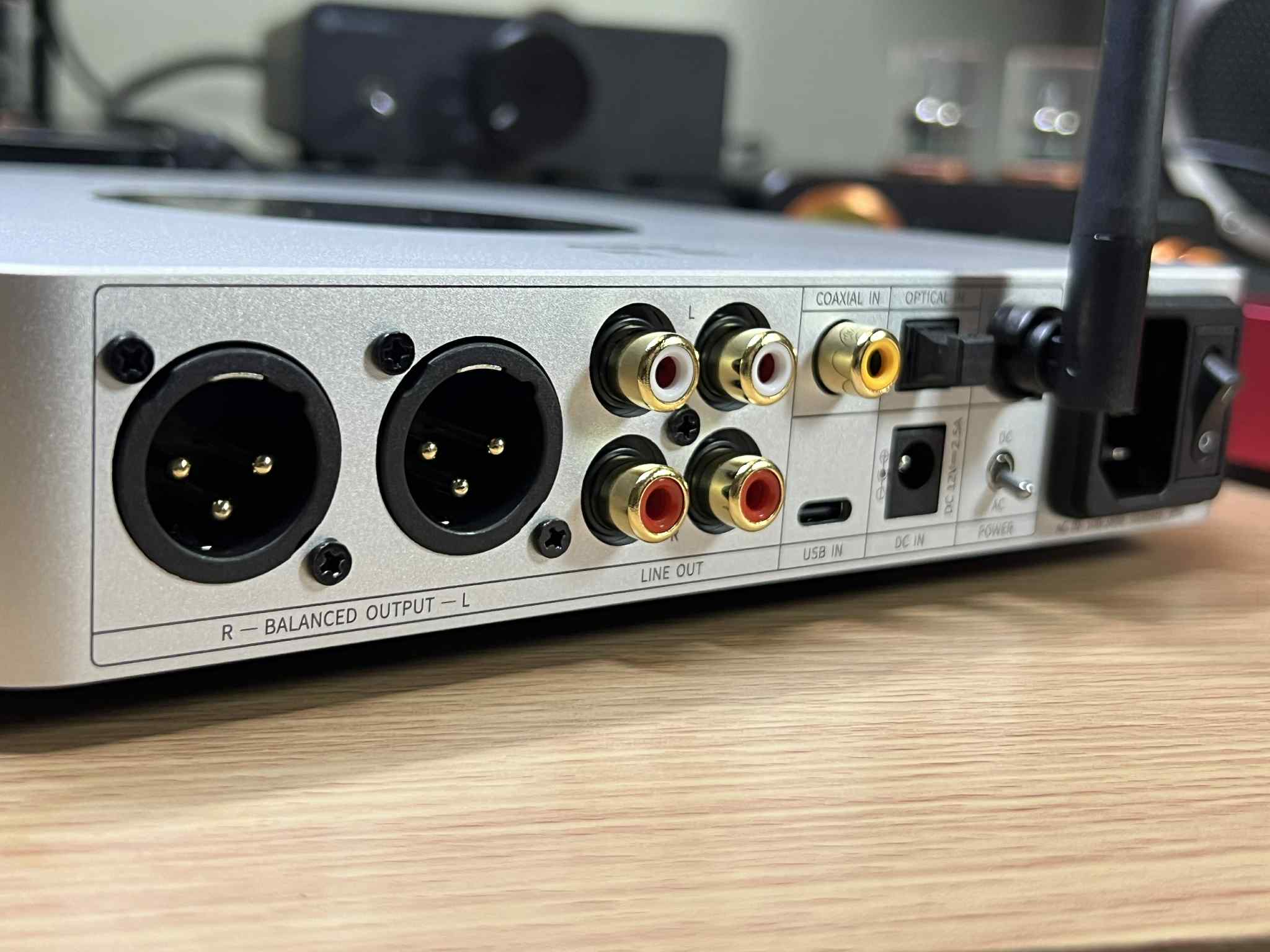
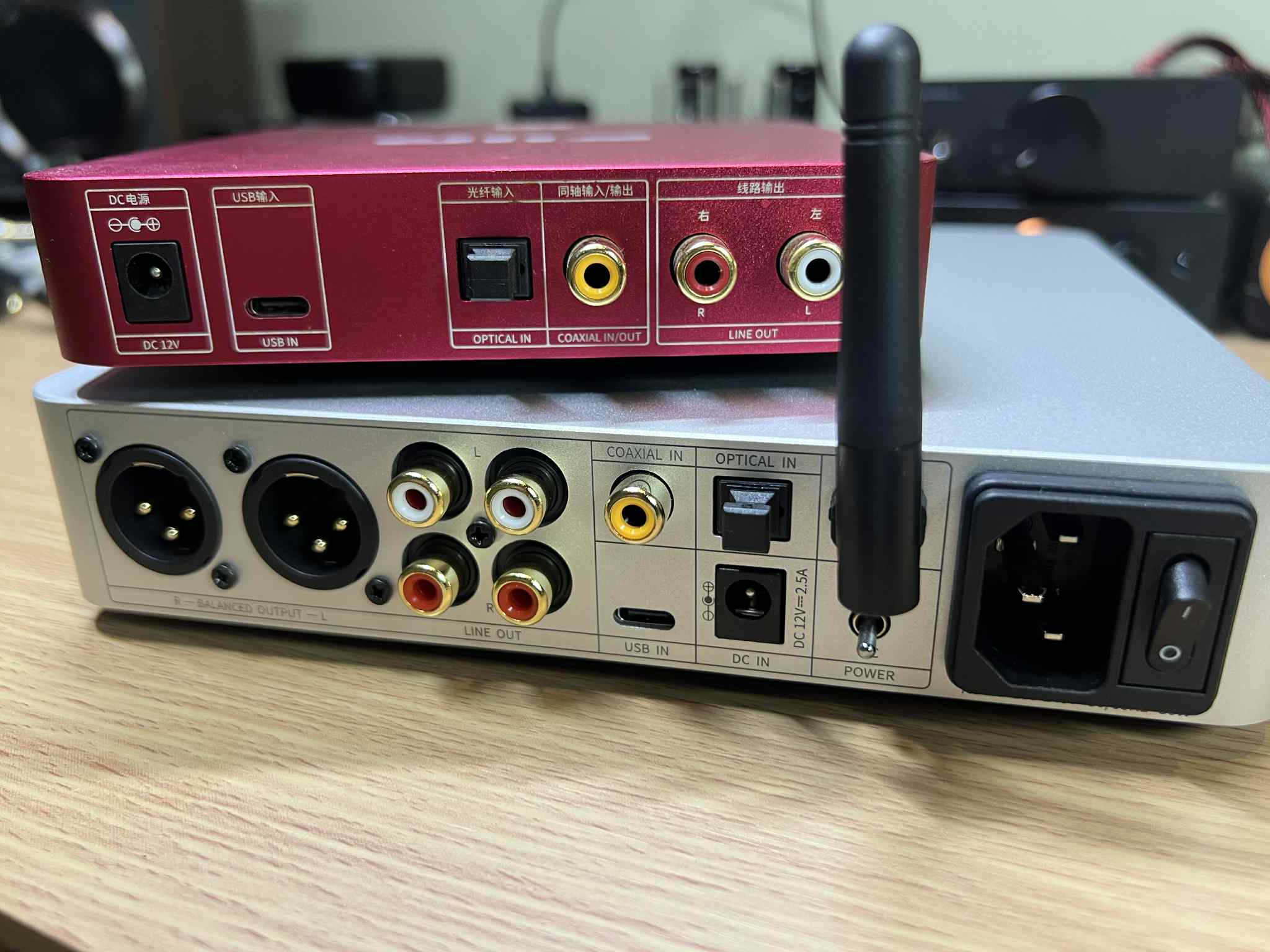
Another neat trick is its dual power support. The built-in 30W linear power supply is already well-designed shielded, quiet, and stable but FiiO also gives you a DC input, so you can plug in an external linear power supply if you want to experiment. It’s definitely not a must, but the option’s there for enthusiasts who like squeezing every bit of performance out of their gear.
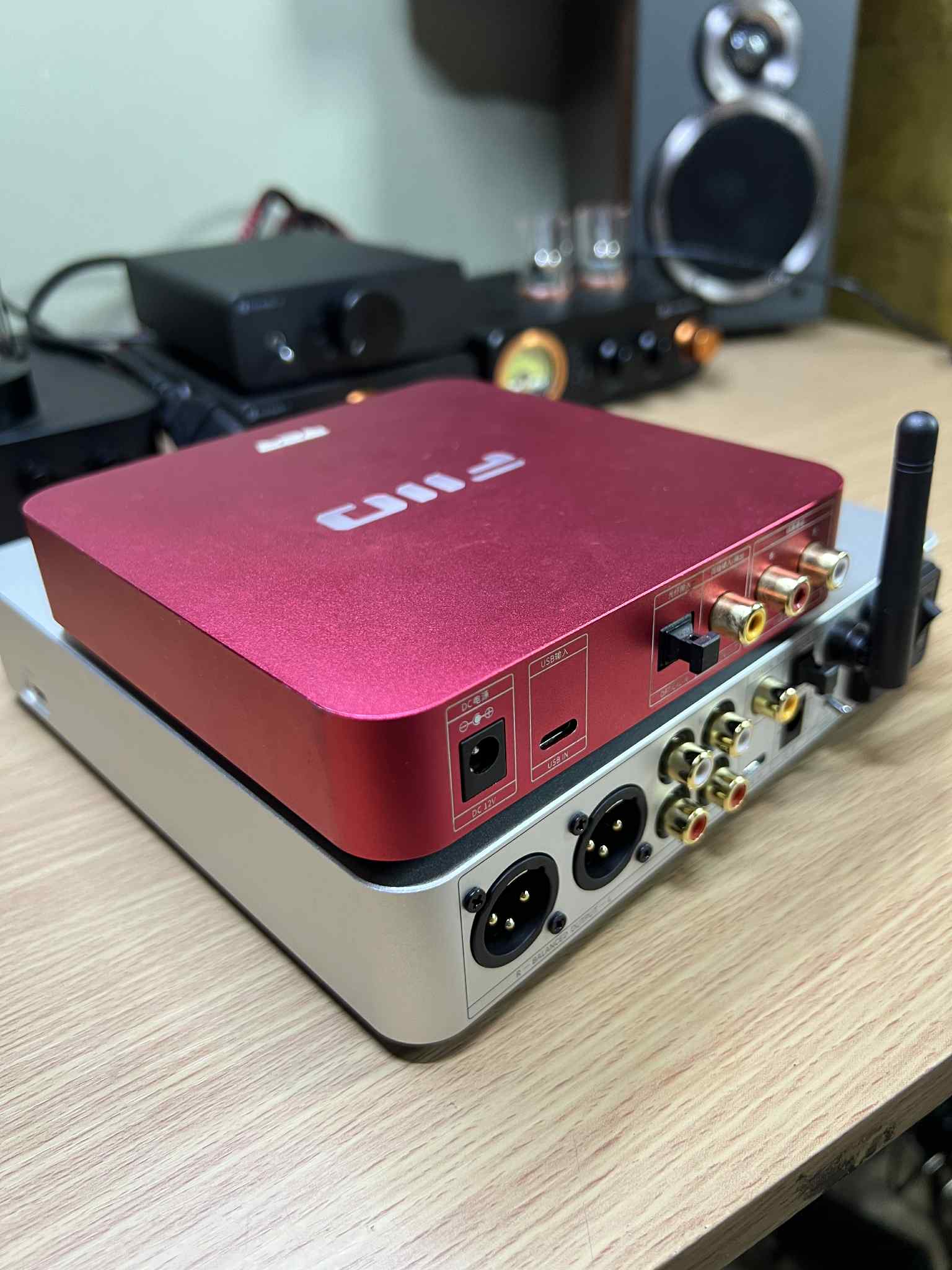
Overall, the K13 doesn’t just sound more powerful it feels like a more capable, grown-up machine. It’s more flexible, and seriously well thought-out, ready to anchor anything from a minimalist desktop setup to a full-blown headphone and speaker rig.
Under the Hood – Fully Differential 24-bit R2R DAC
Here’s where it gets a bit nerdy but also pretty fascinating. The K13 uses the same fully differential 24-bit R2R DAC design found in the K11, but FiiO clearly didn’t just copy and paste the circuit. They refined the analog stage and upgraded the op-amps, tightening performance across the board.
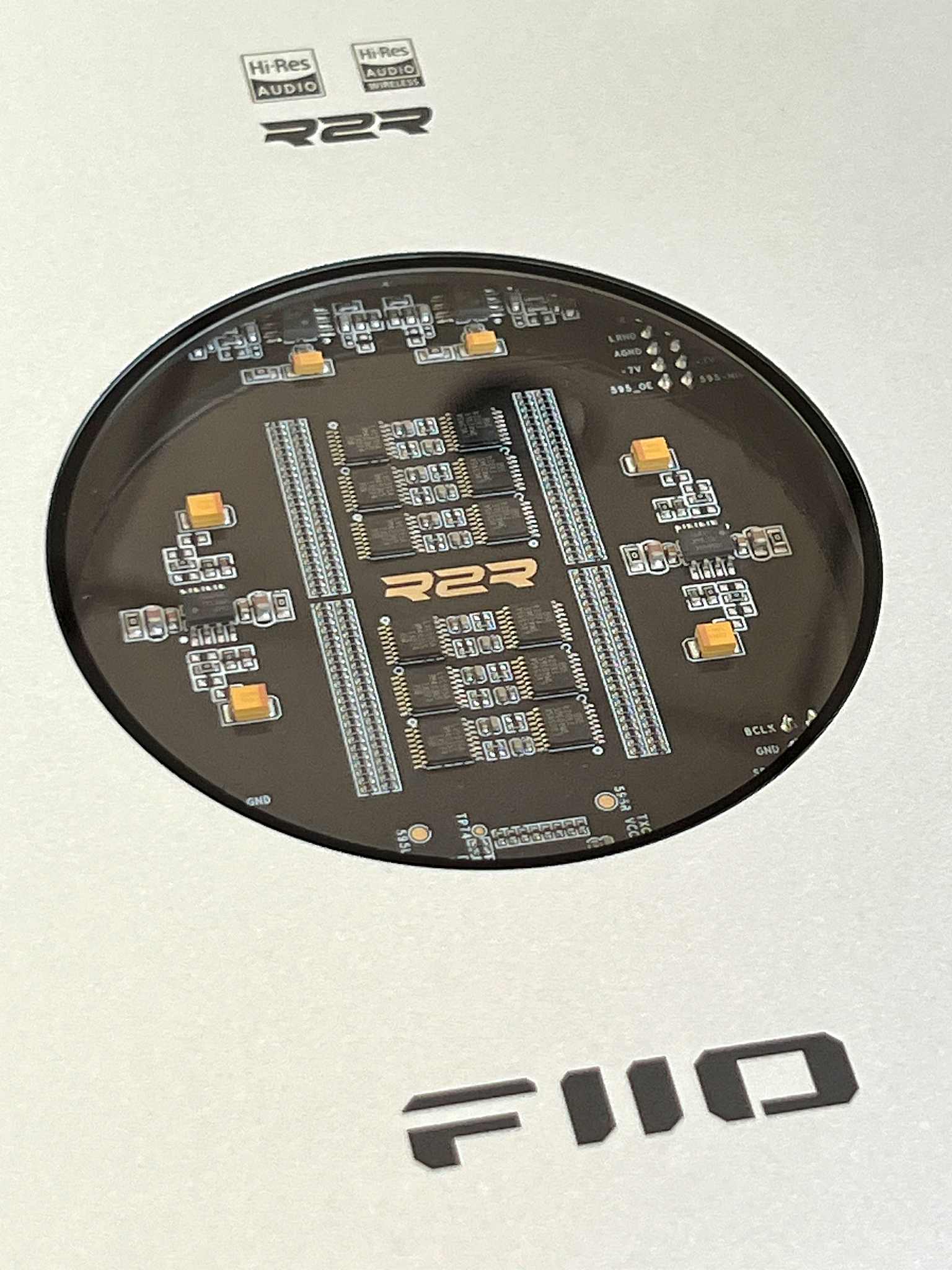
Each channel in the K13 is built around a discrete resistor ladder 48 precision thin-film resistors per channel, all rated at 0.1% tolerance with a low temperature drift of just 30ppm. Multiply that by four channels for the fully differential setup, and you’ve got 192 carefully matched resistors working together to decode the signal. This isn’t your typical off-the-shelf DAC chip it’s a proper, hand-tuned R2R array, designed for that smooth, natural conversion that gives R2R its distinctive sound.
Being fully differential means both the positive and negative halves of the signal are processed separately, which cancels out noise and distortion. The result is a quieter, cleaner background, better channel separation, and a more stable stereo image. In actual listening, that translates to smoother transitions between instruments, clearer layering, and a more defined sense of space.
The K13 also retains the dual NOS and OS playback modes, which is great to see. These modes subtly change how the DAC presents music, and depending on what you’re listening to, they can really shape the overall feel of a track.
In NOS (Non-Oversampling) mode, the K13 skips all digital filtering and lets the signal flow as raw as possible. There’s no pre-ringing or artificial smoothing, so what you get is a more natural, unprocessed sound. It’s got that analog-like flow that R2R fans love smooth, fluid, and a bit warmer around the edges. Notes decay more organically, and the timing feels more relaxed and musical. I often find NOS mode perfect for jazz, acoustic, or vocal-driven tracks where you want that intimacy and easy, natural rhythm.
Switch over to OS (Oversampling) mode, and the K13 upsamples everything to 384kHz. The presentation tightens up the sound becomes cleaner, with sharper transients and a bit more sparkle on top. Imaging feels slightly more precise, and the overall tone leans just a hair brighter. It’s not a night-and-day difference, but it’s enough to notice, especially with more detailed recordings or fast-paced genres like instrumental, electronic, or rock.
What’s nice is how easy it is to toggle between the two modes, so you can experiment and see which flavor suits your mood or your headphones best. For me, NOS brings out that cozy, organic charm, while OS gives things a bit more edge and focus. Both have their place, and it’s great that FiiO gives you the freedom to choose.

Sound Impressions
The K13 keeps that unmistakable R2R character that made the K11 such a fan favorite smooth, natural, and effortlessly musical but you can tell right away that this is a step forward in refinement. The overall tonality leans a touch cleaner and slightly brighter than the K11, but it never crosses into harsh or fatiguing territory. It’s more about adding air and openness to the presentation rather than changing its core personality.
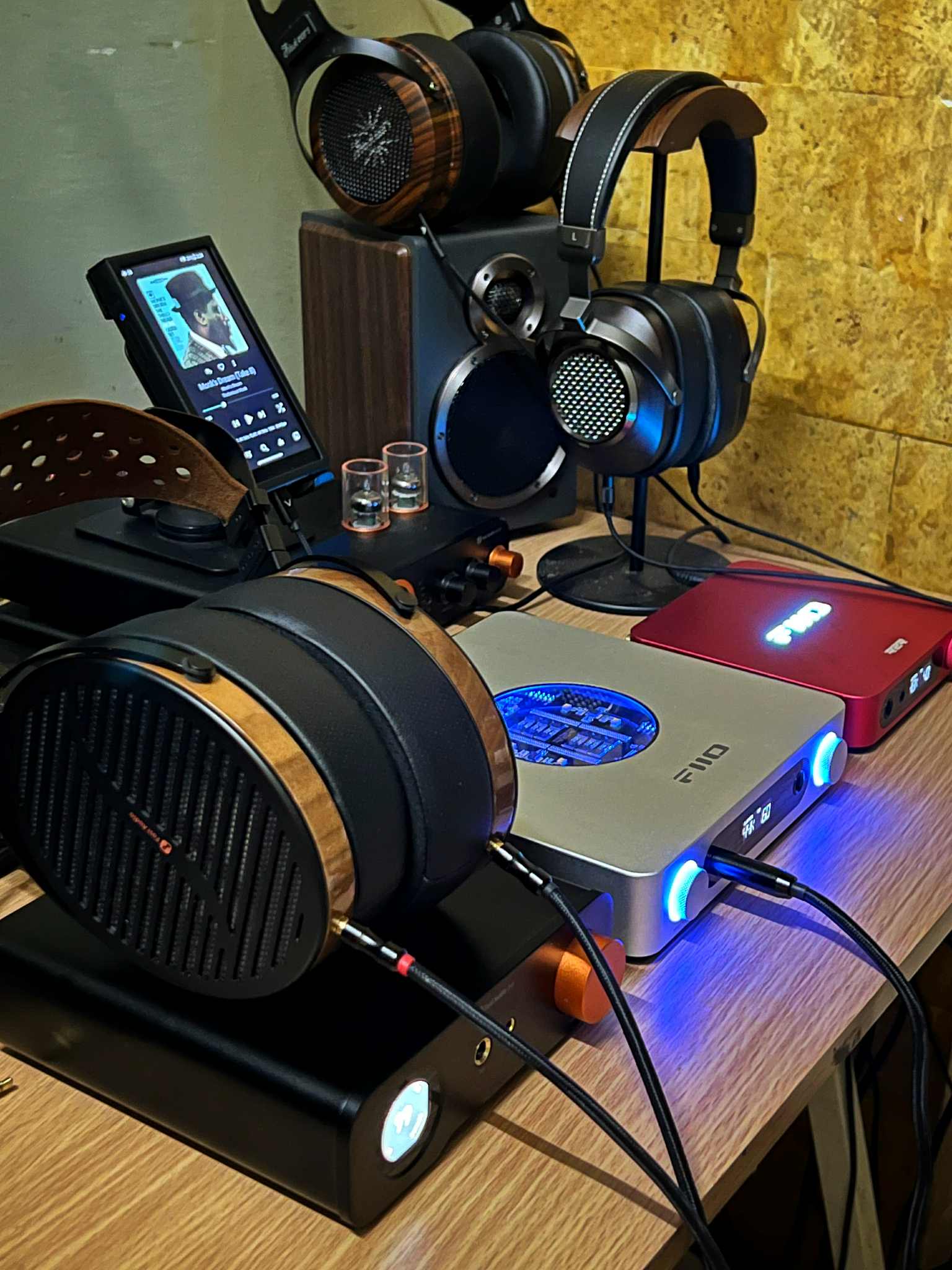
That extra clarity gives instruments and vocals more room to breathe. The background feels quieter almost pitch-black which makes details pop out more distinctly. Subtle textures, reverbs, and microdetails that were a bit buried on the K11 now come through with ease. Imaging also feels sharper and more precise, with a stronger sense of direction and distance between instruments.
There’s a newfound spaciousness to the K13’s soundstage too. It stretches wider and digs deeper, giving you a more immersive, layered sense of placement. You can hear how instruments occupy their own space without blending together, which adds a level of realism and scale.
The K13 refines everything that made the K11 special, it’s cleaner, more dynamic, and more spacious, yet it still holds onto that signature R2R warmth and musical flow that keeps you glued to your playlist longer than you intended.
My current setup on the K13 R2R is running in Non-Over-Sampling (NOS) mode with EQ completely off, and that’s the basis for this sound impression. I’ve always preferred keeping things this way—even back when I was using the K11 R2R because it delivers the most natural, uncolored presentation of the DAC’s character.
NOS mode on R2R DACs tends to preserve that raw, organic texture in the music. It doesn’t try to oversmooth transients or artificially boost clarity, which makes the sound feel more honest and analog-like. Pairing that with EQ off keeps the playback chain as pure as possible, letting the DAC’s natural tuning and tonal balance come through without digital tweaks.
So, when I talk about how the K13 R2R sounds its dynamics, warmth, or detail it’s all coming from this base configuration. That’s my personal sweet spot for getting a real sense of what the DAC is capable of.
Bass
The low end on the K13 feels more refined and confident than before. The K11 already had a warm, full-bodied bass presentation, but the K13 takes it a step further with tighter control and faster transients. Notes hit with more precision and stop cleanly, which gives the overall sound a snappier, more defined rhythm.
The sub-bass reaches deeper too you can feel that low-end rumble when the track calls for it, but it’s no longer a soft bloom. It’s tighter, more textured, and well separated from the midbass. That added control helps preserve clarity in the mids, so nothing gets muddy or congested.
Bass guitars sound especially satisfying here. There’s grip and texture you can hear the fingers sliding along the strings, the resonance of each note, and the way it locks in with the kick drum. It’s not boosted or showy, just clean, impactful, and natural. The K13 manages to deliver that solid foundation and warmth without sacrificing detail or balance, giving the overall presentation a sense of weight and drive that feels both musical and mature.
Midrange
The midrange on the K13 feels refined smooth, full-bodied, and just the right amount of forward to pull vocals into focus without pushing them too close. There’s that unmistakable R2R character here: rich, organic, and textured, but now cleaner and more transparent compared to the K11. It’s like the K13 wiped a thin layer of haze away, letting the midrange breathe more naturally while keeping its musical warmth intact.
Vocals sound particularly engaging. Male voices have weight and depth, while female vocals carry a natural sweetness and air that make them feel intimate yet effortless. Instruments in the midrange acoustic guitars, pianos, strings, brass have excellent tonal accuracy and body. You can hear the resonance of a guitar’s wood, the gentle attack of piano keys, or the bow’s friction on strings, all presented with great realism and texture.
What’s nice is that despite the extra clarity, the K13 doesn’t lose that analog ease that makes R2R sound so addictive. Everything flows together smoothly nothing feels forced or overly etched. It’s detailed and articulate, but still musical in that very natural, human way that keeps you listening longer than you planned.
Treble
This is where the K13 really shows its maturity. The treble has that extra bit of refinement and openness that the K11 only hinted at. It’s crisp and extended, giving music a nice sense of air and shimmer up top, but it never crosses into harsh or fatiguing territory. There’s a balance here clean and detailed, yet smooth enough to keep long listening sessions comfortable.
Cymbals sound more natural, with better texture and decay. You can actually hear the metallic shimmer fade out instead of it being chopped short or overly splashy. High-hats and percussive details have more definition, and upper harmonics from strings or female vocals come through with greater clarity and separation.
Compared to the K11, the K13’s treble just feels more alive and articulate. It gives recordings that extra bit of air and dimension, which helps open up the overall presentation. It’s detailed without being clinical there’s a sweet, organic quality to the highs that complements its R2R character beautifully.
Soundstage and Imaging
The K13 immediately gives a greater sense of space both in width and depth. The stage feels more open and layered, letting instruments breathe naturally instead of crowding the center. You get that satisfying feeling of air between instruments, where each note sits clearly in its own pocket. Imaging precision is spot on too you can easily trace where vocals, guitars, and percussions are placed. Even subtle details like background harmonies, room reverb, or ambient effects come through with more depth and realism, making recordings feel more three dimensional and alive.
Dynamics
This is where the K13 really flexes. It has noticeably better control and punch compared to its predecessor. When a track builds up, it delivers that surge of energy with conviction, but it also knows when to pull back and let quiet passages breathe. Macro dynamics those big swings in volume and energy feel powerful and confident, while microdynamics the smaller shifts and textures within notes are cleaner and more nuanced. You hear the little things: the decay of a snare hit, the pluck of a string, the vocalist’s breath between lines.
What’s impressive is how all this technical improvement doesn’t come at the cost of musicality. The K13 still has that unmistakable R2R warmth and sweetness, keeping the presentation smooth and organic. It’s a more dynamic and spatially capable version of the K11 R2R, but it never sounds sterile or analytical. It stays engaging, natural, and easy to listen to for hours.
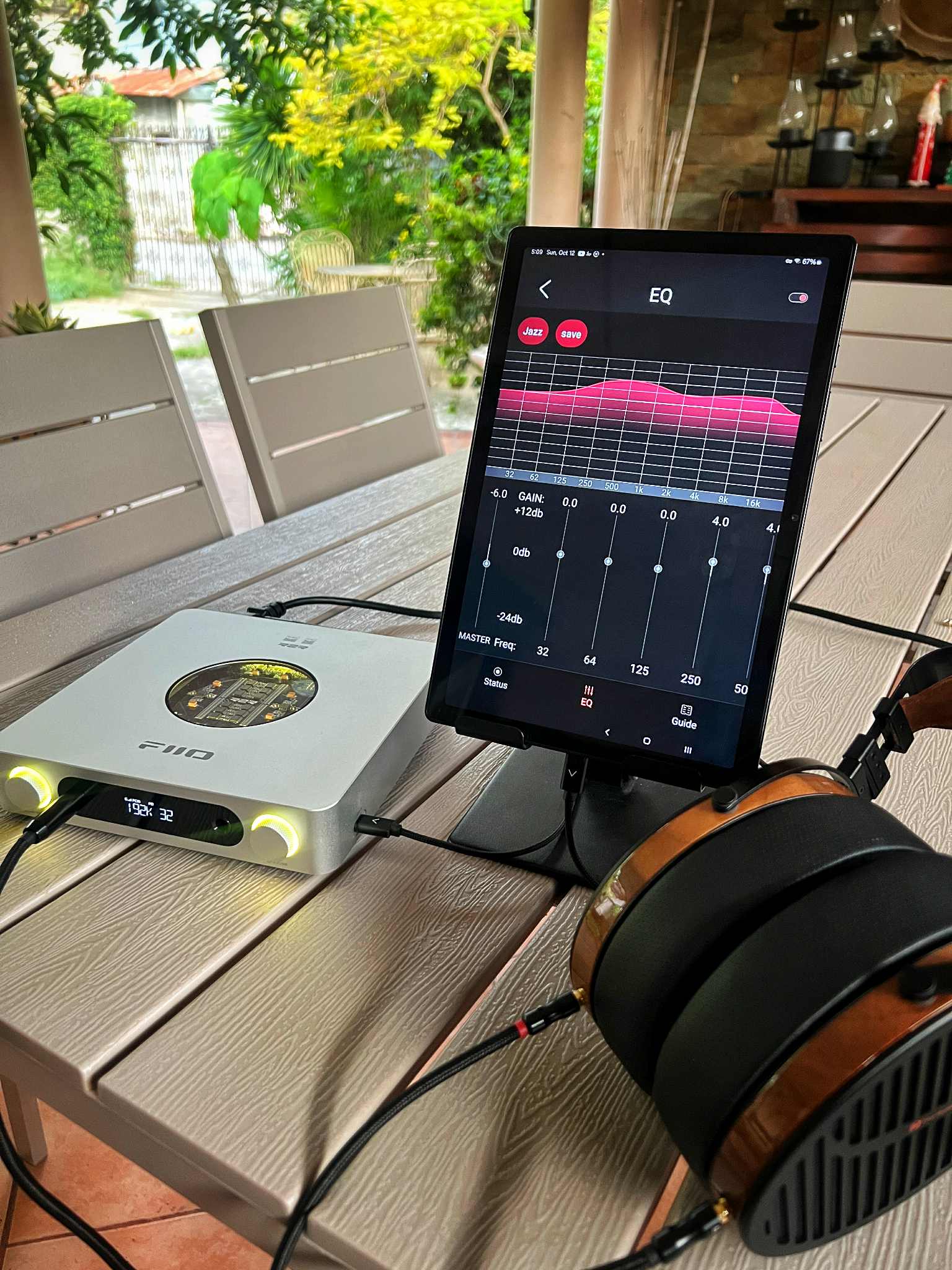
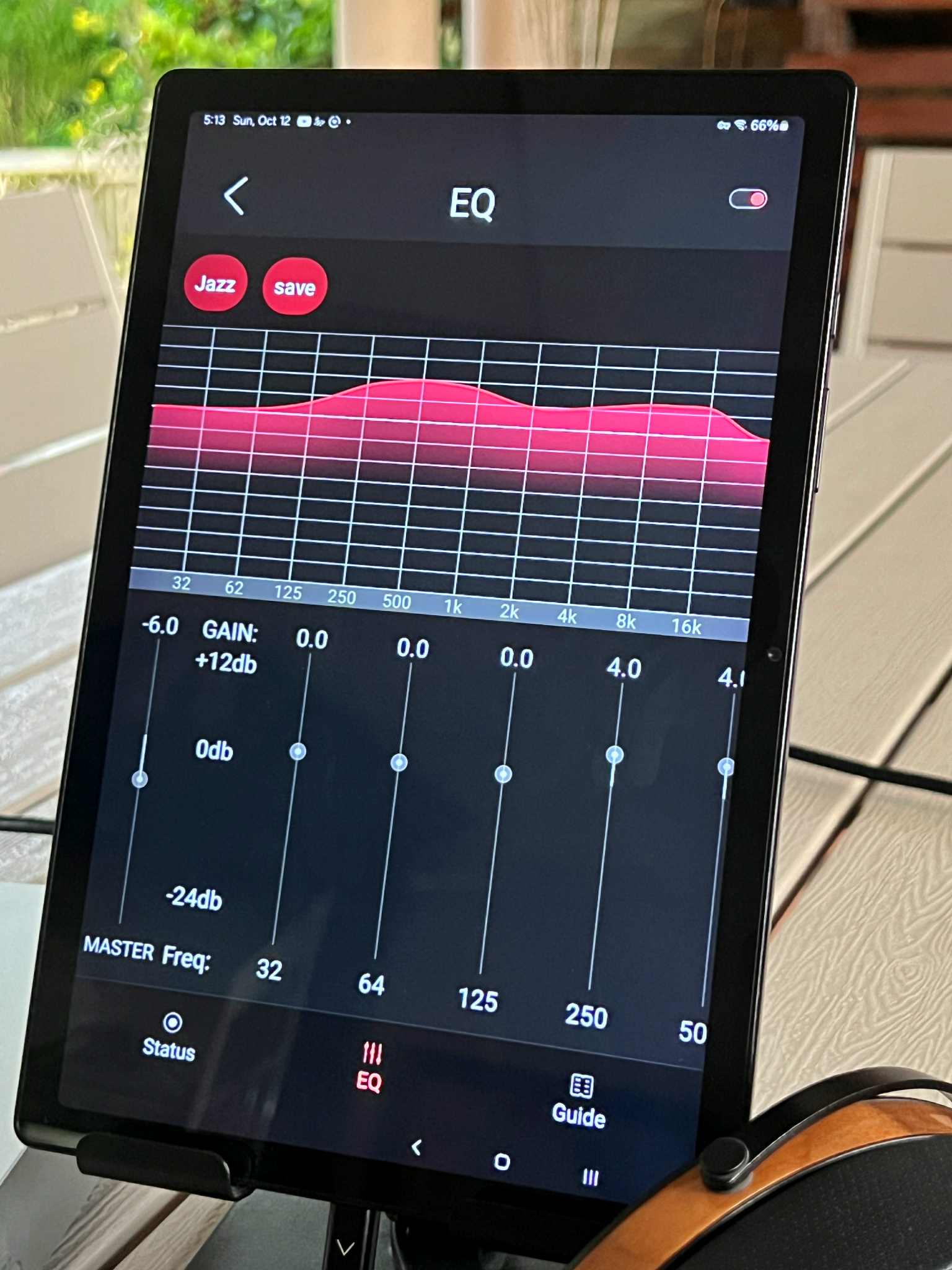
Technical Performance and PEQ
One of the best parts about the K13 is how much control it gives you over your sound. FiiO built in a full 10-band PEQ (Parametric Equalizer), which you can access through the FiiO Control app. You can adjust each frequency band manually fine-tuning gain, bandwidth (Q), and center frequency or just pick from a few pre-made curves like “Retro PEQ” if you want a quick flavor change. For people who like to experiment or tailor their sound for specific headphones, it’s a huge plus. You can even save, import, and export your own EQ profiles, which makes it easy to switch between setups or share your favorite curve with friends.
Under the hood, it runs on the newer XMOS XU316 platform, which means it’s fully capable of handling PCM up to 384kHz/32bit and native DSD256 playback without breaking a sweat. Everything about its operation feels quick and responsive input switching, gain toggling, or entering EQ mode all happen instantly with zero lag or glitching. The overall experience is smooth and well-polished.
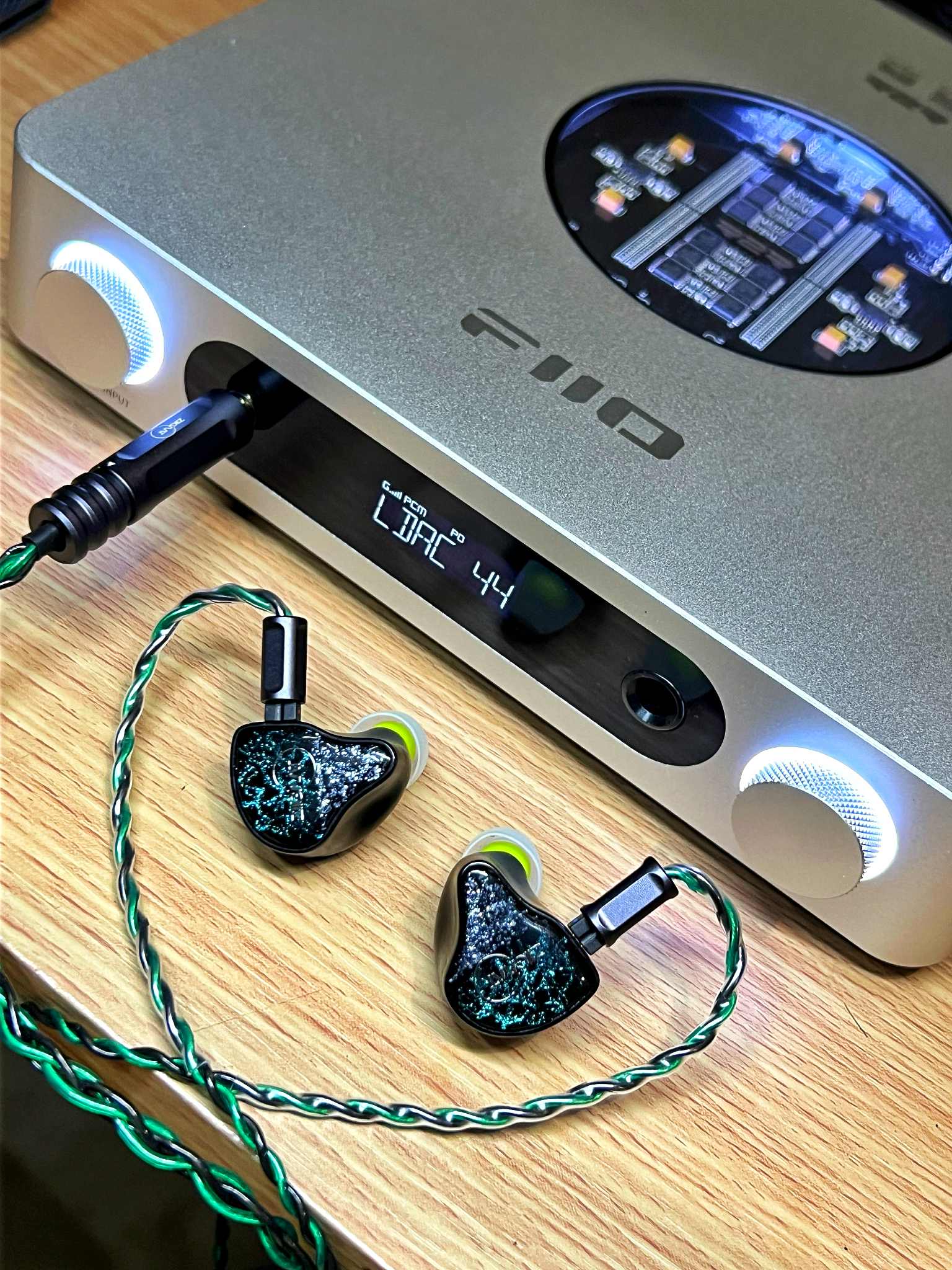
Listening Chain and Pairing
Most of my testing was done using:
Transport: FiiO JM21, Hiby R6 III and Samsung Galaxy android tablet.
IEMs: Fosi Audio IM4, Binary DynaQuattro, Hearfield CU8, Dita Project M, Ziigaat Odyssey 2, Ziigaat Crescent, Punch Audio Martilo, Kiwi Ears Astral, TinHifi T7..
Headphones: Fosi Audio i5 Planar, Sivga Anser, Hifiman HE400SE, Kiwi Ears Altruva
The K13 handled everything I plugged into it like a champ. It’s dead quiet with sensitive IEMs my Heartfield CU8s, for example, were completely silent even with high gain engaged. No hiss, no background noise, just a clean, black background that lets the music breathe. When I switched to more demanding gear like full-sized planars, the K13 had more than enough power on tap to drive them confidently without losing composure. It delivers that extra bit of authority and headroom that gives planars proper dynamics and low-end control.
The three gain levels are a nice touch, letting you fine-tune output strength depending on what you’re using. And I really appreciate that FiiO added independent volume memory for both the PO (headphone out) and PRE (line out). It might sound minor, but it’s incredibly convenient no more blasting your speakers after a late-night IEM session. Just switch outputs and it remembers your last level for each. Smart, simple, and genuinely useful.
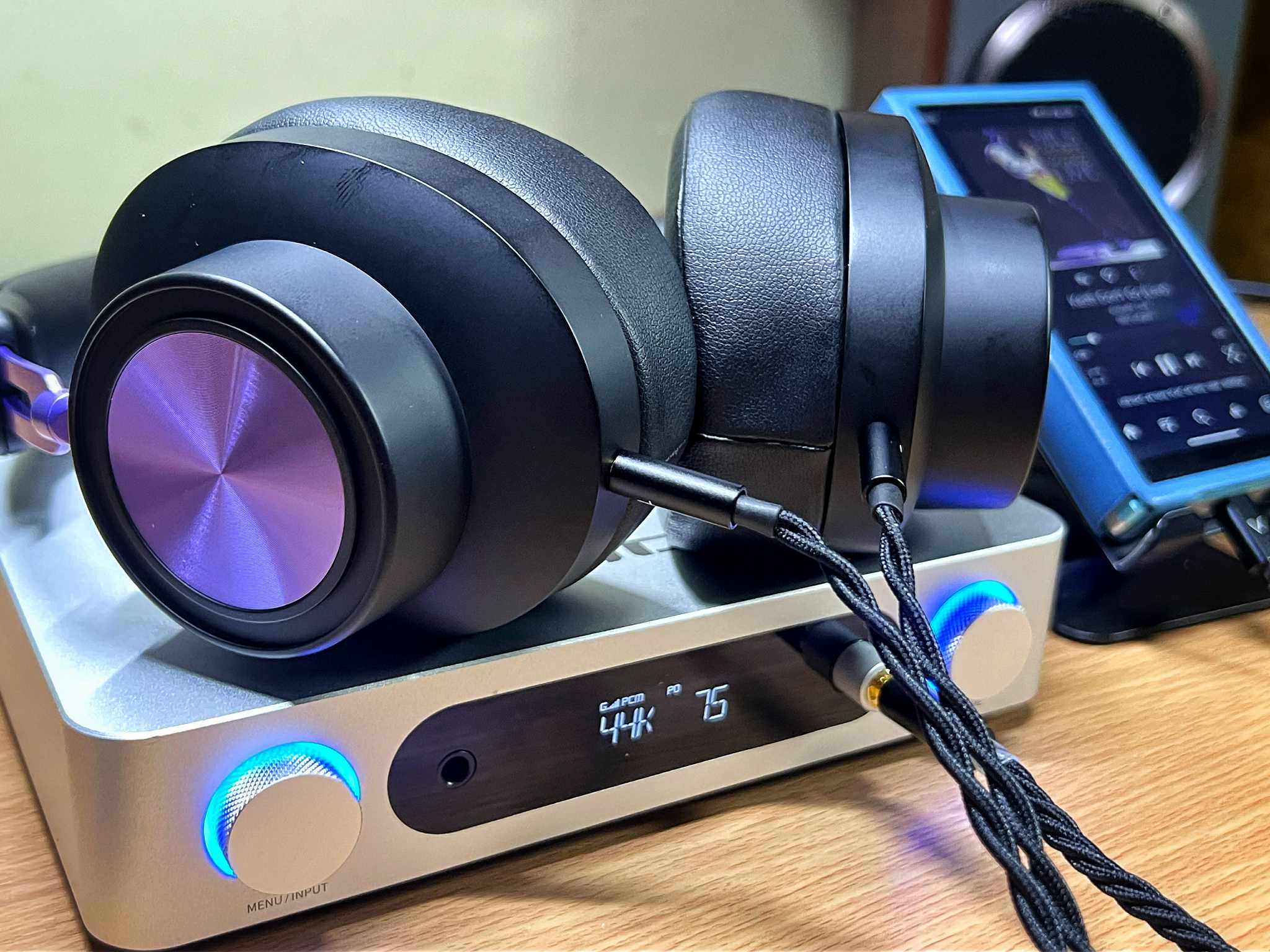
Final Thoughts
The FiiO K13 R2R feels like a true step forward from the K11 R2R not just a facelift, but a real, meaningful upgrade. It’s cleaner, more powerful, and more refined in every sense, from build quality to sonic performance. The K11 R2R still stands as one of the best-value R2R DAC/amps out there, no question. But the K13 takes what made the K11 great and pushes it further, with better clarity, stronger dynamics, and a noticeably more open soundstage.
In terms of lineup, the K13 sits neatly between the K11 and FiiO’s higher-end K15 and K17, but in actual listening, it already brushes shoulders with the big boys. That R2R smoothness is still front and center rich, natural, and easy to listen to but now with tighter bass, more air in the highs, and a sense of drive that makes music feel more alive. Add LDAC Bluetooth support, upgraded internals, and more connectivity options, and it becomes a seriously versatile all-rounder for both desktop and living room setups.
If you’re after that unmistakably analog R2R character but want better dynamics, a roomier stage, and modern convenience, the K13 R2R hits that sweet spot dead-on. At this point, I’d say FiiO didn’t just improve on the K11 they built a desktop DAC/amp that’s genuinely tough to beat in its price class. Honestly, this one’s not leaving my desk anytime soon.
Link: https://www.fiio.com/k13r2r
https://www.amazon.com/FiiO-K13-R2R-Headphone-High-Fidelity/dp/B0FQ4T61RL
The FiiO K13 R2R feels like a true step forward from the K11 R2R not just a facelift, but a real, meaningful upgrade. It’s cleaner, more powerful, and more refined in every sense, from build quality to sonic performance. The K11 R2R still stands as one of the best-value R2R DAC/amps out there, no question. But the K13 takes what made the K11 great and pushes it further, with better clarity, stronger dynamics, and a noticeably more open soundstage.
In terms of lineup, the K13 sits neatly between the K11 and FiiO’s higher-end K15 and K17, but in actual listening, it already brushes shoulders with the big boys. That R2R smoothness is still front and center rich, natural, and easy to listen to but now with tighter bass, more air in the highs, and a sense of drive that makes music feel more alive. Add LDAC Bluetooth support, upgraded internals, and more connectivity options, and it becomes a seriously versatile all-rounder for both desktop and living room setups.
If you’re after that unmistakably analog R2R character but want better dynamics, a roomier stage, and modern convenience, the K13 R2R hits that sweet spot dead-on. At this point, I’d say FiiO didn’t just improve on the K11 they built a desktop DAC/amp that’s genuinely tough to beat in its price class. Honestly, this one’s not leaving my desk anytime soon.
Link: https://www.fiio.com/k13r2r
https://www.amazon.com/FiiO-K13-R2R-Headphone-High-Fidelity/dp/B0FQ4T61RL
- Get link
- X
- Other Apps
- Get link
- X
- Other Apps
Can you comment on your comparisons with the Fosi ZH3? Thank you for the great write up!
ReplyDelete